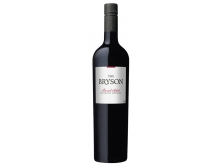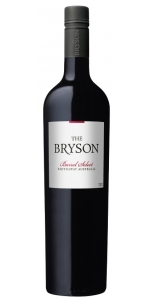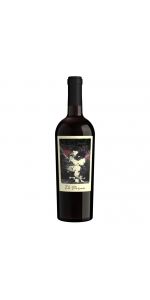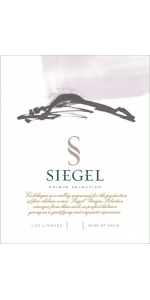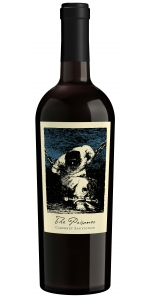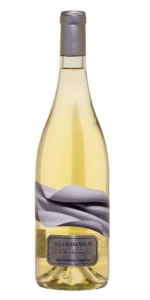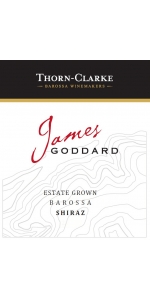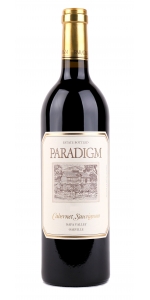The Bryson Barrel Select Red 2012
| Country: | Australia |
| Region: | Barossa Valley |
| Winery: | Morambro Creek |
| Grape Types: | Cabernet Sauvignon Shiraz |
| Vintage: | 2012 |
| Bottle Size: | 750 ml |
This limited release wine is created from the fusion of two exceptional parcels of 70% Shiraz and 30% Cabernet Sauvignon. This classic blend is matured in the finest oak crafting an intriguing unison that captures the essence of the vineyard and highlights its unique varietal expression.
Vintage Overview
2013 was a very good season with predominantly mild, dry days. Yields were generally low and this did result in some excellent parcels of fruit being harvested. Vine-balance was carefully monitored, resulting in fruit that demonstrates the vibrancy and fruit-derived characters that we strive for in our wines. By all accounts it was a textbook vintage.
Tasting Notes
Deep inky purple in color. Aromas of blackberry, mocha, mint and spices. Lush, ripe palate dominated by black fruits, cherry and chocolate. An expansive palate with black fruits and nicely balanced by oak.
Made with the greatest dedication and care, select parcels were matured in new and seasoned French and American oak for up to 20 months prior to being selected for this blend. Individual barrels from our family estate that best demonstrate the intensity of our fruit, balanced by integrated oak were selected for the final blend, which was then bottled with minimal filtration.
Pairs well with venison, ribeye steak, lamb.
Review:
70% Shiraz and 30% Cabernet Sauvignon. Fruit and oak combine here to produce a powerful, full-bodied red with coffee, toast, blackberry and rick plum flavours pouring through the palate. Tannin taps gently at the brakes: peppercorn and pine notes add lift: creaminess to the texture keeps everything running smoothly. Screwcap. 14.5% alc.
Halliday Wine Companion 2020 94 Points
The Prisoner Wine Company The Prisoner Red Blend is made from a blend of Zinfandel, Cabernet Sauvignon, Petite Sirah, Syrah, and Charbono.
Bright aromas of ripe raspberry, vanilla, and coconut give way to flavors of fresh and dried blackberry, pomegranate, and vanilla, which linger harmoniously for a smooth and luscious finish.The Prisoner Red Blend was inspired by the wines first made by the Italian immigrants who originally settled in Napa Valley. The Prisoner is now the most recognized red blend, leading the resurgence of interesting blends by incorporating Zinfandel with the unlikely mix of Cabernet Sauvignon, Petite Sirah, Syrah, and Charbono.
On the nose, dried blackberry, dried açai berries, and hints of cedar and tobacco leaf are accented by sweet spices of clove, cinnamon, and nutmeg. Flavors of ripe dark cherry, blackberry coulis, and hints of anise linger harmoniously for a soft, vibrant finish balanced by ripe tannins.
Chef Brett recommends pairing The Prisoner Red Blend with Kalbi Short Ribs or Chicken Mole Tostada.
Vineyards: When you outgrow winemaking tradition, you must forge your own path. And we did. The Prisoner exists because of the collaboration with our growers, many of which have been with us since the very beginning—from the Solari Family Vineyard in Calistoga, where old school sensibilities meet new techniques, to the Korte Ranch in St. Helena, a vineyard whose diligence outlasted the Prohibition and has sustained four generations.
Siegel Unique Selection Red is made from 45% Cabernet Sauvignon, 35% Carmenere and 20% Syrah
Aged in French oak barrels for 14-16 months.
Viña Siegel Unique Selection is the utmost expression of our best Los Lingues vineyards located in the Alto Colchagua region.
A deep violet color. There are aromas of cassis and cherries with hints of spices, chocolate and violets. This wine is characterised by its complexity and harmony, with a robust tannic structure.
After carefully selecting the optimum harvest date, the grapes are hand selected, then they are de-stemmed and cold macerated for 5-6 days. Alcoholic fermentation occurs at 26-29°C, during this period pump overs are performed daily at the winemaker’s discretion. Post-fermentative maceration occurs for 2 to 3 weeks. The wine is smoothly clarified. Cold stabilisation only occurs when necessary.
Review:
"The blend - Cabernet Sauvignon with 55% Carmenère and Syrah - might not be unique, but this is certainly a special wine from the best zones of Los Lingues, showing serious, aromatic mint, black cherry and cassis fruit, bold tannins and the structure to age further in bottle. 2022-29"
- Tim Atkin MW (Chile 2020 Special Report), 93 pts
Siegel Unique Selection Red is made from 45% Cabernet Sauvignon, 35% Carmenere and 20% Syrah
Aged in French oak barrels for 14-16 months.
Viña Siegel Unique Selection is the utmost expression of our best Los Lingues vineyards located in the Alto Colchagua region.
A deep violet color. There are aromas of cassis and cherries with hints of spices, chocolate and violets. This wine is characterised by its complexity and harmony, with a robust tannic structure.
After carefully selecting the optimum harvest date, the grapes are hand selected, then they are de-stemmed and cold macerated for 5-6 days. Alcoholic fermentation occurs at 26-29°C, during this period pump overs are performed daily at the winemaker’s discretion. Post-fermentative maceration occurs for 2 to 3 weeks. The wine is smoothly clarified. Cold stabilisation only occurs when necessary.
Review:
"Blackberry, blackcurrant leaf, rose, peppercorn and chocolate orange. It’s medium-to full-bodied with firm, chewy tannins. Concentrated and layered with a flavorful, spicy finish. 45% cabernet sauvignon, 35% carmenere and 20% syrah. Drink or hold."
- James Suckling (June 2021), 91 pts
From the most recognized Napa Valley red blend comes a distinct, new wine. Made in the same iconic style as The Prisoner Red Blend, we proudly introduce The Prisoner Cabernet Sauvignon. Redefining taste once again.
On the nose, blackberry, currant, and plum are layered with dried, crushed herbs and licorice. On the palate, cedar, vanilla, nutmeg, and toasted coconut lead as plum and dried blackberries culminate in a lush, full mouthfeel and a lengthy, balanced finish.
Chef Brett recommends pairing The Prisoner Cabernet with Grilled Ribeye or Aged Gouda Cheese.
The Prisoner Wine Co. Blindfold Chardonnay is made from 100 percent Chardonnay.
Blindfold Chardonnay is gorgeously balanced and a true triumph. Fragrant with notes of lime zest, yuzu, jasmine, and a slight minerality, Bright on the palate with juicy green citrus, lychee, green apple and toasted hazelnut. You’ll find both freshness and soft texture from its time in oak. The finish is long and indulgent–let yourself sink into this luxurious pour.
All of the fruit was hand-picked and whole cluster pressed. Barrel fermentation took place in 100% French oak barrels, and 23% New barrels that were selected by forest or grain tightness to frame our fruit profile, bring texture, and soften acidity. Lots were tasted every other week while we stirred the lees to precisely soften the mouthfeel and achieve optimal balance. With fermentation, and subsequent elevage taking place over 11 months we have achieved this goal.
Chardonnay grapes were harvested as flavors of lime zest and green apple started to develop and before acid started to ripen away. Picking decisions were made based on acidity rather than sugar level (Brix). We want to showcase the vineyard sites and growing region in perfect balance.
This limited release wine is created from the fusion of two exceptional parcels of Shiraz and Cabernet Sauvignon. This classic blend is matured in the finest oak crafting an intriguing unison that captures the essence of the vineyard and highlights its unique varietal expression.
Vintage Overview
2012 was a very good season with predominantly mild, dry days. Yields were generally low and this did result in some excellent parcels of fruit being harvested. Vine-balance was carefully monitored, resulting in fruit that demonstrates the vibrancy and fruit-derived characters that the family strives for in its wines. By all accounts it was a textbook vintage.
Tasting Notes
Deep inky purple in color. Aromas of blackberry, mocha, mint and spices. Lush, ripe palate dominated by black fruits, cherry and chocolate. An expansive palate with black fruits and nicely balanced by oak.
Made with the greatest dedication and care, select parcels were matured in new and seasoned French and American oak for up to 20 months prior to being selected for this blend. Individual barrels from our family estate that best demonstrate the intensity of our fruit, balanced by integrated oak were selected for the final blend, which was then bottled with minimal filtration.
Pairs well with venison, ribeye steak, lamb.
Review:
"A 60-40 blend of Shiraz and Cabernet Sauvignon, the 2012 The Bryson Barrel Select offers minty notes layered over dark fruit. Roasted meat, blueberry and cassis also play roles in this full-bodied but structured wine that appears to be at or near peak maturity. - Joe Czerwinski"
- Robert Parker's Wine Advocate (Interim end of September 2018), 93 pts
The Morambro Creek Estate
The property was founded in 1994 by the Bryson Family who first settled in the Padthaway region in 1955. In the early 1990's the Brysons decided to take the plunge and plant vines on the property. Initially their plan was to sell these grapes to the big wine producers but after a few vintages, the desire to see the fruits of their labour turned into their own wine, was just too great for them to resist. In 1998 they held onto a small selection of their fruits and sent it to the Cape Jaffa Winery to be made into wine. Morambro Creek was born, the name coming from the creek that meanders through the property.
“Rich, opulent reds from Padthaway that will repay a short period of cellar aging.”
- Anthony Dias' blue pocket guide to wine 2006
The Morambro Creek Vineyards
They farm 420 acres, separated into two plots each of 210 acres, about 7-8 kilometers apart. The vines enjoy a cool Mediterranean climate with plentiful winter / spring rainfall and the limestone subsoil that provides the excellent drainage. The grapes varieties cultivated here are Chardonnay, Cabernet Sauvignon and Shiraz.
At Morambro Creek, their sole objective is to produce the best wines possible from their unique vineyard site. Planted on own rootstock and located in the Padthaway valley which is comprised of rich Terra Rosa soils their estate vineyard benefits from excellent sun exposure producing grapes of optimum flavor, color and tannin development. The warm summer days are moderated each evening by coastal winds that cool the vines and result in a longer ripening period. This extended period allows for the grape tannins and seed to fully ripen prior to being harvested, thus creating wines that are rich and supple on the palate.
Their pursuit of great wine can also be seen in the meticulous management of their vineyard. They strive for low crop yields and small grape bunches of intense flavor, and whilst they employ the latest technology in the vineyard to help them achieve vine balance and reduced vigor, they harvest when the fruit reaches full flavor development.
James Goddard was an ancestor of the Clarke family. Born in West Sussex, England in 1823, James spent his 74 years as a sailor, a whaler, a bullock driver, farmer, prospector, miner and hotel keeper. From an illiterate runaway living rough on the streets of London, he became a rich, successful and admired pillar of South Australian society.
James arrived in Adelaide in 1839 as a 16-year-old sailor. Twelve years later, his life changed forever with the news of gold findings. For the next 20 years, James roamed the country learning the geology that improved his chances of prospecting.
James Goddard Shiraz is made from 100 percent Shiraz.
In 1870, he tried his luck near his farm in the Barossa Valley and discovered the region’s first gold deposits, creating the prosperous Lady Alice Mine. The Lady Alice Mine, though it is no longer operational, was & still is the most successful gold mine in South Australia. From these roots, the Thorn-Clarke family has been connected to the region for the last 150 years.
James Goddard Shiraz is a blend Shiraz sourced from the Milton Park vineyard in the north of Eden Valley, and the St Kitts vineyard in the far northern area of the Barossa. Fruit is harvested in the cool of the night to maintain maximum flavour and freshness and it is fermented for 8 days. The ferment is pumped over twice daily to extract the colour and flavour from the fruit. Once finished fermentation the wine was then matured in a blend of French and American oak for a period of 10 to 12 months depending on the vintage.
Deep vibrant red with purple hues to the rim. The nose shows lifted plums, vibrant purple berries and a delicate spice note. The palate has concentrated satsuma plum, blackberry with lovely charry oak in the background. Long, juicy and even with plush fruit on the finish.
Review:
“Blended from two estate vineyards, St. Kitts and Milton Park, this shiraz offers its richness without any aggression or overt perfume. It’s just lush and delicious, a friendly embrace of firm tannins and purple-red fruit. The texture and flavor combine in a saturated meatiness, for Korean barbecue.”
- Wine & Spirits Magazine, 92 points
Paradigm Cabernet Sauvignon is made from 90% Cabernet Sauvignon, 8% Merlot, 1% Petit Verdot, 1% Cabernet Franc
20 months in French oak (only about a third of that is new oak) and for 20 more months in bottle before release
Our winemaking "style" is solely determined by this place or terrior we call "Paradigm." Winemaking is agriculture when you own your vineyards and are able to farm them to promote the very best Earth will give you. All of our selections of wines are made from five varietals on the estate. Every wine is 100% farmed and grown by us.
Complexity in our wines supported by luscious fruit and acidity is our hallmark. Our efforts during harvest and barrel cellaring concentrate on maintaining the freshness from the first day we handpicked each vineyard block. Simple winemaking protocols are employed while crucial “timing” oriented winemaking decisions rule each day.
The 2015 vintage produced delicious concentrated wines in smaller quantity than normal. This black raspberry colored Cabernet has lovely open aromatics of black cherry, berry, and plum layered with a perfect balance of new and used French Oak.
Reviews:
"Owned and managed by the Harris family, Paradigm winery produced its first vintage in 1991 in Oakville with winemaker Heidi Barrett. A self-contained winery estate with 50 acres of vineyards, Paradigm maintains a hands-on approach to all winemaking and vineyard operations. The 2015 Cabernet Sauvignon consists of 89% Cabernet Sauvignon, 6% Merlot, 3% Petit Verdot and 2% Cabernet Franc, and is aged in both new and used French oak for 20 months, then aged a further 20 months in bottle before release. The total production for this vintage was 5,544 bottles." Blind tasted by Dave Allen, Stephen Brook, Terry Kandylis (at Decanter Magazine's December 2019 Californian Cabernet 2015 Panel Tasting, London, 17 Sep 2019) - Decanter 95 Points
- back
Opus One is made from 93% Cabernet Sauvignon, 4% Cabernet Franc, 1% Malbec, 1% Merlot and 1% Petit Verdot
Opus One 2021 is made from 93%, Cabernet Franc 4%, Petit Verdot 2%, Merlot 0.5%, and Malbec 0.5%.
The Opus One 2021 effuses seductive, dark-fruit aromas of crushed cassis, blackberry, and black cherry with subtle hints of violet, vanilla, and baking spices. Bright and fresh on the attack, concentrated flavors mirror the aromas and are coupled with an exceptionally plush, creamy texture in the mid-palate from the fine-grained tannins. Poignant notes of black tea, licorice, and dark chocolate lead to
Of the great European wine families, the Rothschilds are perhaps the best known. And Baron Philippe de Rothschild is perhaps the best known of this great family. At the age of 20, Baron Philippe took on the management of Château Mouton Rothschild from his father Baron Henri. Philippe’s vision changed the world of wine: he invented Château bottling, commissioned great artists to illustrate his wine labels – and, in partnership with Robert Mondavi in 1979, created Opus One.In the 1980s, after her father’s death, Baroness Philippine de Rothschild left a stage career that included the Comédie Française and the Renault-Barrault Theatre Company, bringing her own exquisite style and creativity to the design, construction, and operation of Opus One.Among great New World wine pioneers, Robert Mondavi is an international icon. Bringing a passion for excellence to everything he did, Robert Mondavi led a renaissance in California fine wine for over six decades. Among other accomplishments, he introduced temperature-controlled fermentation, French oak barrel aging, and high-density viticulture to a fledgling American wine industry. But life was not only wine for Robert Mondavi: he broadened the American cultural palate by marrying fine wine to food, music, and the arts. One of few Americans to have received the French medal of the Legion of Honor, Robert Mondavi showed extraordinary vision as co-founder of Opus One.
Review:
An enticing aroma of violets, cherry blossoms, fresh blue and black fruit and great structure define this beautiful, age-worthy wine. Subtle layering of fruit and oak spices between firm, fine-grained and supportive tannins gives it a calm intensity. So elegant and polished. Hints of cinnamon and graphite accent blackcurrant and blueberry flavors that linger and grow in a long finish. Already attractive to drink, but best after 2029.
-James Suckling 99 Points
Le Jade Picpoul de Pinet is made from 100% Picpoul de Pinet
Pale straw color. Delicate white flower, citrus and juicy pear aromas. Fresh, crisp, and bright acidity with mineral and saline accents. Well-balanced and easy-drinking.
A refreshing treat laced up with snappy food-friendly acidity.
Picpoul Le Jade makes a classic match with oysters on the half shell and goes very well with exotic food in general. Picpoul means lip-smacking good.
SOIL : Clay and limestone soil just a few kilometres from the reputed Etang de Thau (salted water lagoon) overlooking the Mediterranean town of Sète.
VINIFICATION : Grapes are harvested at 12°- 13° maturity
Skin maceration for several hours
Selection of drained juice after undergoing pneumatic pressure.
Cold double decantation.
Thermoregulated fermentation at 16°C
No malolactic fermentation.

